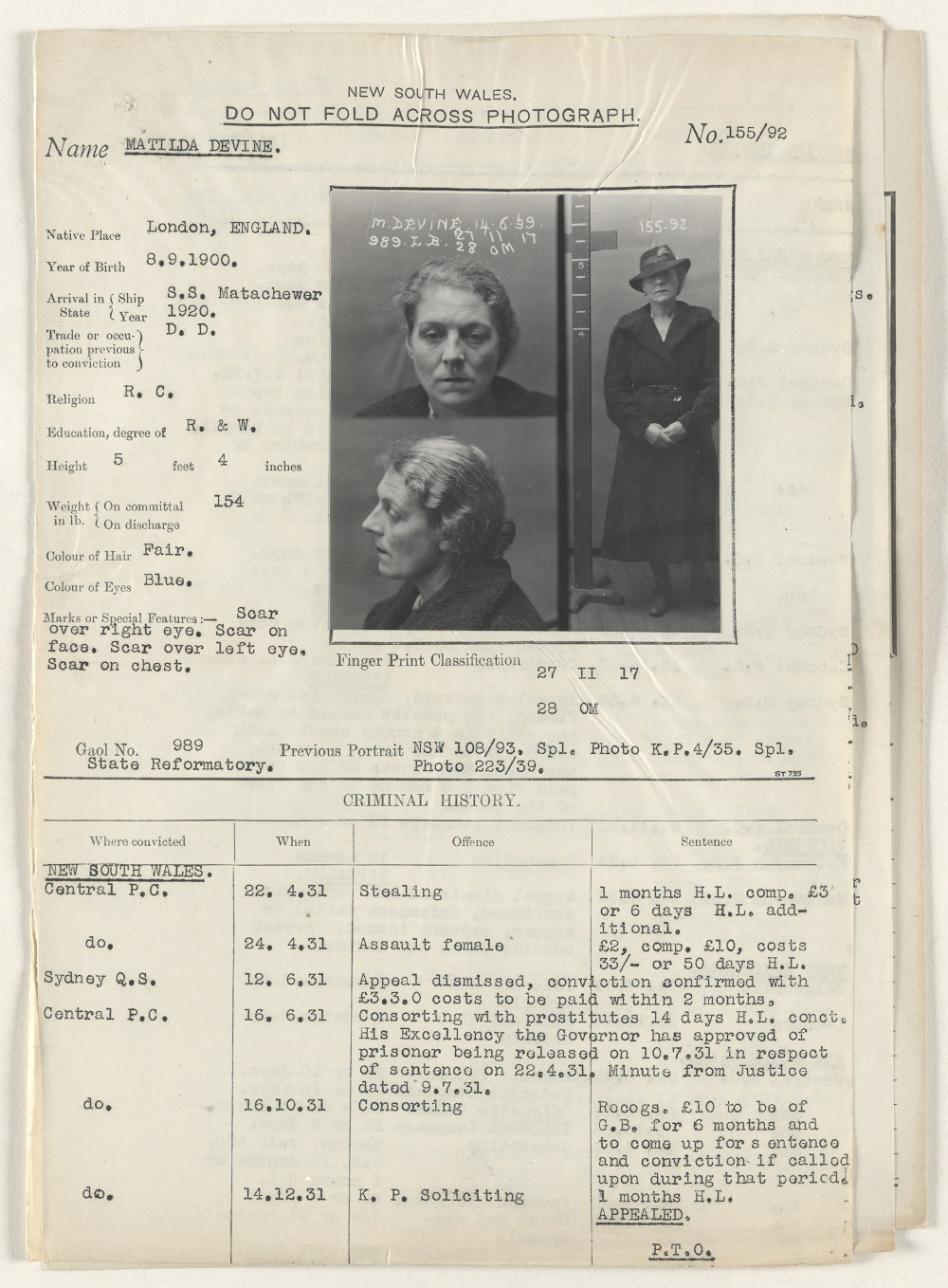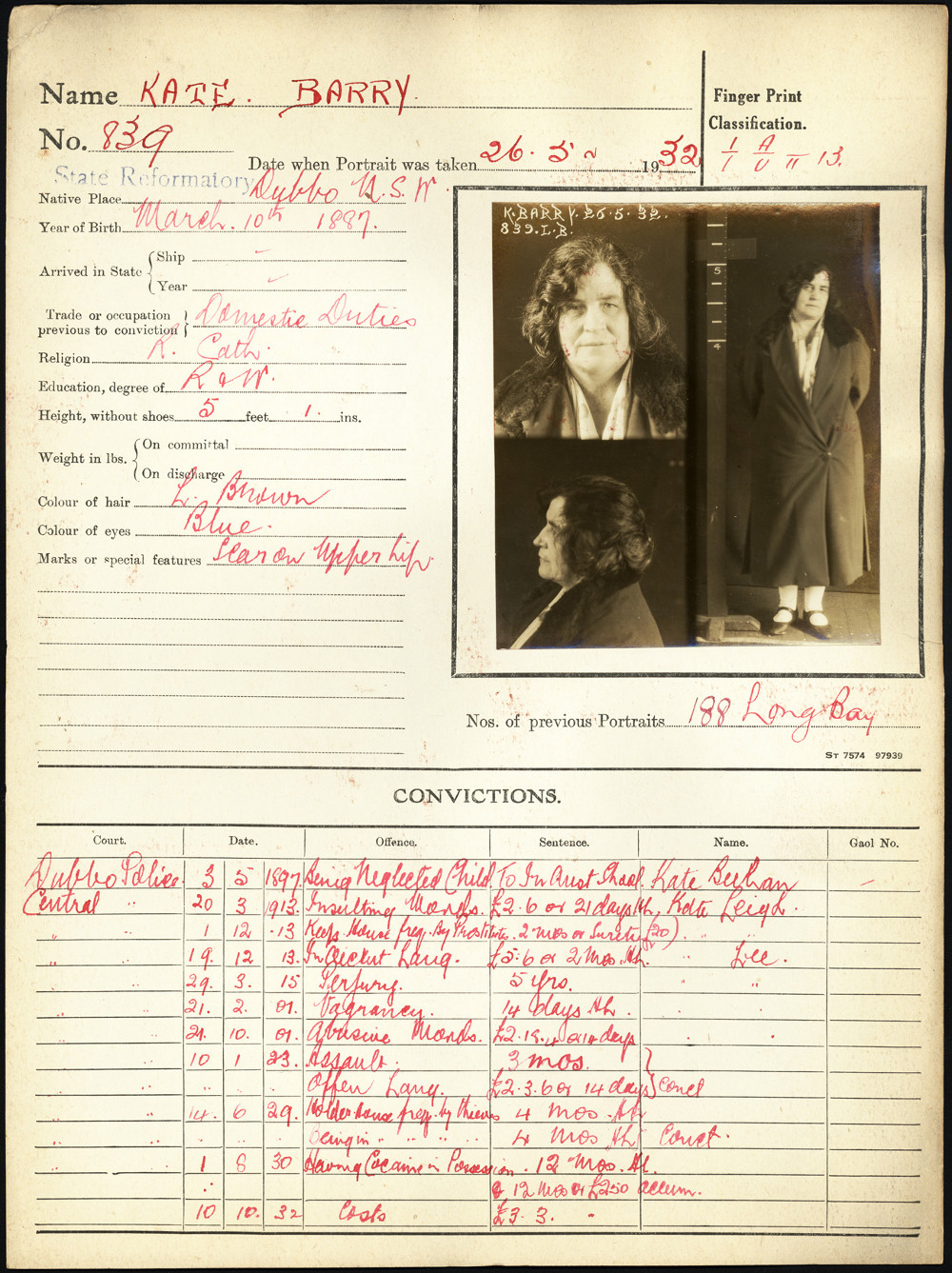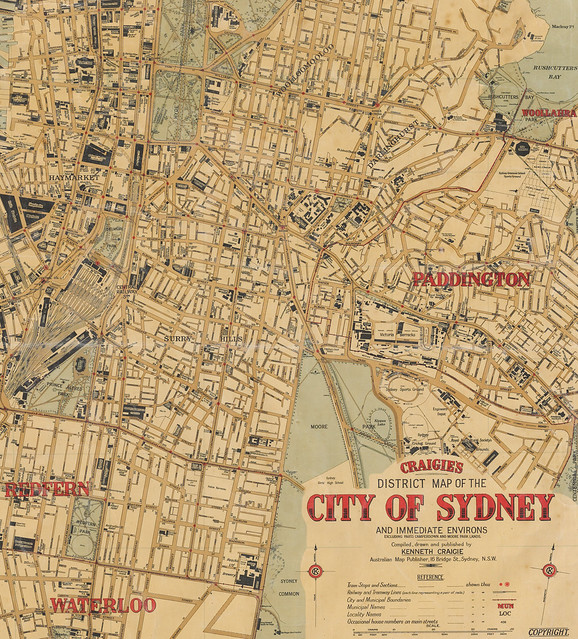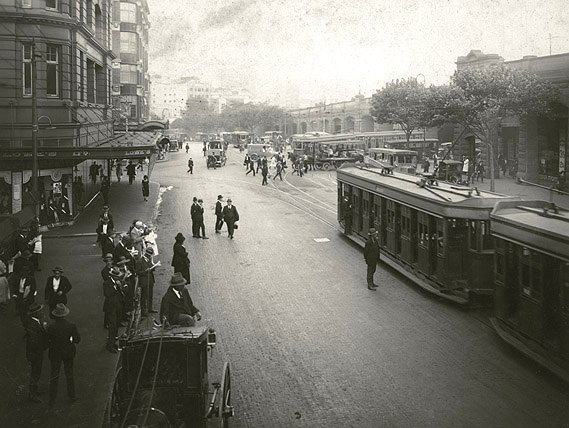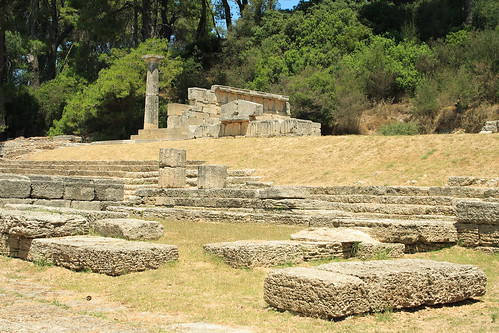Last week Archives Outside passed the thousand comment mark!! A big thank you to all our blogging friends who have jumped in and joined the conversation over the last two years :-)
Take a walk through the streets of Sydney during #underbelly #razor
Fans of the the TV series Underbelly Razor will be interested to see this map of Sydney from c.1930, the era of the infamous razor gangs. Imagine the figures of Kate, Tilly and Jim (pictured below in 1923,1939 and in 1932 respectively) as they walked through these streets……..
To see more images of “old” Sydney take a look at State Records NSW’s photostream on Flickr.
See also
Beauty from Nature – art of the Scott Sisters [An Exhibition from the Archives at the Australian Museum ( @austmus )]
Beautiful and intricate, this stunning exhibition features more than 60 delicate watercolours, as well as rarely-seen notebooks, handwritten manuscripts, sketches and letters, which together form a fascinating record of the lives of Harriet (Hattie) and Helena (Nellie) Scott.
August links post
A few links we have found online…
From the Metroon to Wikileaks: People, power and the archive
What is an archive? What is its purpose? Has the kind of archive that has evolved in 20th and early 21st century Western civilisation remained consistent with the underlying principles of the contract struck between the people and the State in a democracy, whereby the State establishes the archive in part as a guarantee of its ability to carry out its actions in a fair and accountable way? WikiLeaks, embodying as it does a renegotiation of the boundaries of knowledge and power that exist between the citizenry and the State, has brought into sharp relief the unhelpful layers of bureaucracy and vested political interests that have blunted the power of the archive in society. Now, as technology permits us to sweep away many of the encumbrances of the paper based recordkeeping legacy, is it possible for the archive to reclaim its position at the heart of a healthy democracy?
Continue reading the article by Cassie Findlay at Recordkeeping Roundtable
Boxing it up at the National Library of Australia
There’s something about a box that brings the curious out of people; what’s in it? At the Library however, no time for such dreamings. A box is a means of housing an item, a very practical no-nonsense approach to storing.
I don’t seem to box as much as I would like; I have too many books to repair. But we have a steady repertoire of box types. Let me tell you about what I can make.
Read more from Erika Mordek on Behind the scenes blog.
Playtimes: A century of childrens games and rhymes
From conkers to singing games, rude rhymes to chasing games, Playtimes brings together a hundred years of children’s songs, rhymes and games. Explore war battles on bombsites, rude jokes on council estates, and fantasy TV shows in the playground, to discover the unique and fascinating world of children’s play.
Featuring film and audio clips as early as 1900, the website explores the enormous diversity of children’s games as well as the changes and continuities of play through time.
Explore this British Library site.
Archive of the Week – National Gallery of Ireland via @archivesireland
Rose and olive cushion cover by Lily Yeats, c.1902.
A cushion cover with a rose and olive motif, designed by William Morris and executed by Lily Yeats (1866–1949). In 1902, Elizabeth and her sister Lily Yeats joined Evelyn Gleeson in establishing a craft studio in Dublin called Dun Emer. This specialized in printing and other crafts. While living in London Elizabeth Yeats had been part of the circle of William Morris and had been inspired by his printing work.
(From the Yeats Archive, presented by Anne Yeats in 1996. #yeatsarchive)
Conservators find best treatment for wedding veil from “Gone With The Wind” is no treatment via @Rainbyte
Gone With The Wind is full of lessons about love, life, and loss. Almost 75 years later, Scarlett’s silk wedding veil has one more lesson.
“At the end of our life, it is the end of our life. We are all organic material. When a costume has come to the end of its life, it is no different than we are,” says Cara Varnell, a specialist in Hollywood film costumes and the conservator working on the Ransom Center’s five Gone With The Wind dresses.
Finding 11 Words in the Pentagon Papers via @CASSPF
AFTER all 7,000 pages of the Pentagon Papers were released last month, a parlor game was born: Find the 11 words that the government didn’t want you to read.
Those 11 words, on a single page, were supposed to be redacted when the papers were made public in their entirety by the National Archives and Records Administration. But the National Declassification Center reversed that decision after the Lyndon B. Johnson presidential library discovered that the full page — with all 11 words — had been released in the early 1970s by the House Armed Services Committee. Any effort to reclassify the words now would only call more attention to them.
That has not stopped policy wonks from trying to guess what they were
Learn more at the New York Times
Twitter just got the respect it deserves
For brands and businesses that have yet to see the true value of Twitter, expect to be impressed. Twitter just stepped up and demanded to be noticed. If you weren’t convinced of the physical traffic Twitter drives, you should definitely notice it now.
We’re having an Open Day! Come and meet us in person Friday 28 October #srnswopenday
As part of the celebrations for its 50th birthday State Records NSW is opening its doors and taking you behind the scenes. Come and join us for a day of talks, information sessions, tours and hands-on-workshops.
Regional Staff Pick [Camel train photograph, Broken Hill]
On a recent trip to Broken Hill I was fortunate enough to be able to interview Brian Tonkin from the Outback Archives about his favourite archive.
Powerhouse Museum – Applications now open for 2012 Regional Services Program
Organisations and individuals with a specific project are invited to submit an Expression of Interest for support through Regional Internships, the Movable Heritage Fellowship, and the Professional Advice and Project Assistance program.
July Links post
A few links we have found online…
A Canvas Seachange: camping on the beach in mid twentieth century Sydney
This paper escapes the crowds and heads to the ocean beaches north of Manly and south of Coogee, to try and better understand the diversity and complexity of Sydney’s interwar beach cultures.


